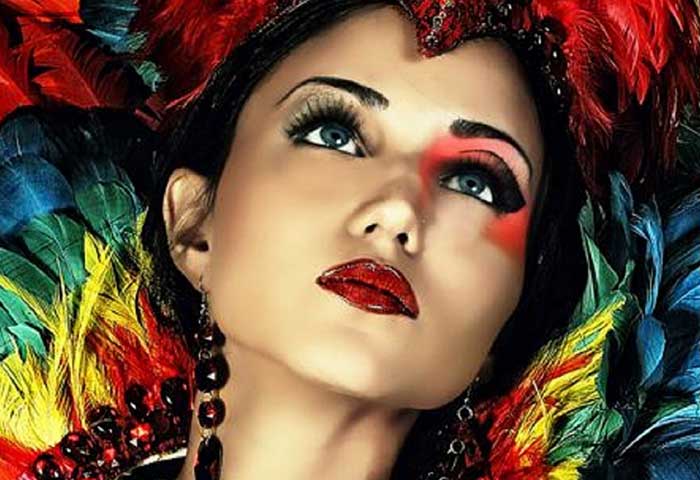[ad_1]
A lot of budding artists shy away from abstract painting . For some reason, there's this misconception made by people outside of or on the cusp of the art world that you have to have a deep, intrinsic reason to create abstract art. That, if you can not paint a convincing realistic landscape first, you do not have the right to paint abstract art.
Why, I say that's silly! Just as anyone can learn how to paint, anyone is allowed to create abstract paintings!
First, I guess we should probably break down what abstract art is . Simply, abstract art is any creation that does not mimic reality.
When you look at abstract art, it can be confusing at first because you're not always admiring a tree or a person or an animal; you're admiring how colors play off each other, how the paint moves across the canvas, and how shapes lines up with one another.
There are abstract artists who move the paint into familiar shape. Sometimes you can pick out a park, or a horse, or a circus elephant. Sometimes, though, the art is just a series of intersecting lines and circles.
The meaning of the art is personal and up to your interpretation. Abstract art requires an audience to be complete.
The ultimate mission of abstract art is to serve as a visual expression of the artist's emotions and to evoke a response in the viewer. The magic of abstract art is its chameleon ability to give a different experience to everyone who looks at it.
How and Where?
Oil painting is a stand-by for classical and modern artists alike. Its sheen, richness, and elegance make it a top-tier choice in the medium department. When it comes to abstract paintings, however, it might be time to pull out the newcomers to the paint scene: acrylic.
Around only since the 1930s, acrylic paint as an advantage other paintings do not: it dries really, really fast! Oil painting is not something you should count out for future paintings, but to start it's best to work with something that dries quickly so that you can not question the decisions you're making. It forces you to commit to your art, which is helpful when learning to go with the flow and create from your soul.
Now that you know what paint you're using, it's time to figure out what you're going to paint on. Abstract art lends itself to a plethora of different painting surfaces, especially when you're using acrylic paint. Many famous abstract artists – Jackson Pollock, Picasso, Leonid Afremov – do their painting on canvas.
Painting on canvas allows your art is speak for itself. You're not trying to tie in the shape of a piece of wood or found object: the two dimensional surface gives your colors and shapes the spotlight. When you're more comfortable using art as an outlet (because that's what abstract art really is: an outlet for an artist's message or emotions ), you can incorporate other "canvases." Some abstract artists even create their paintings on people's skin!
Getting Started
Learning how to create an abstract painting is a lot like learning how to enjoy listening to classical music . There are layers of understanding to classical music, layers of paying attention, and it requires auditory refinement.
But, it's also something you can just DO. You can turn on the radio, crank the classical music, and choose to enjoy it.
Figuring out how to paint abstract art is a lot like that. Of course you can instill deep, rich, complex meaning in your pieces. Of course you can try to make it look like a portrait or a visual representation of a novel or some other complicated artistic slant. Or, to start, you can just paint.
Put yourself into your art. Pick a color that speaks to you . Paint a shape that feels right when you move your arm. Use your hands, you fingertips, your feet. Put your literal self into creating the art. Glue on found objects. Smash berries on the canvas.
This is the kind of art that can skew both ways: it can have extreme limits, or it can be limitless. To get started, do not approach it with any guidelines; simply approach it with a passion to create .
Continuing the Journey
While you might want to keep creating photorealistic paintings or still-life paintings after giving abstract a shot, I encourage you to let yourself fully explore this world of brushstrokes and smudges; splatter and boring edges; geometry and contrast. It's a cathartic side of art. It demands nothing more than what you give . Anything you put down on the canvas is exactly what was supposed to be there. Approach abstraction as a wonderland . There are no expectations here: only fun and exploration.
[ad_2]
Source

